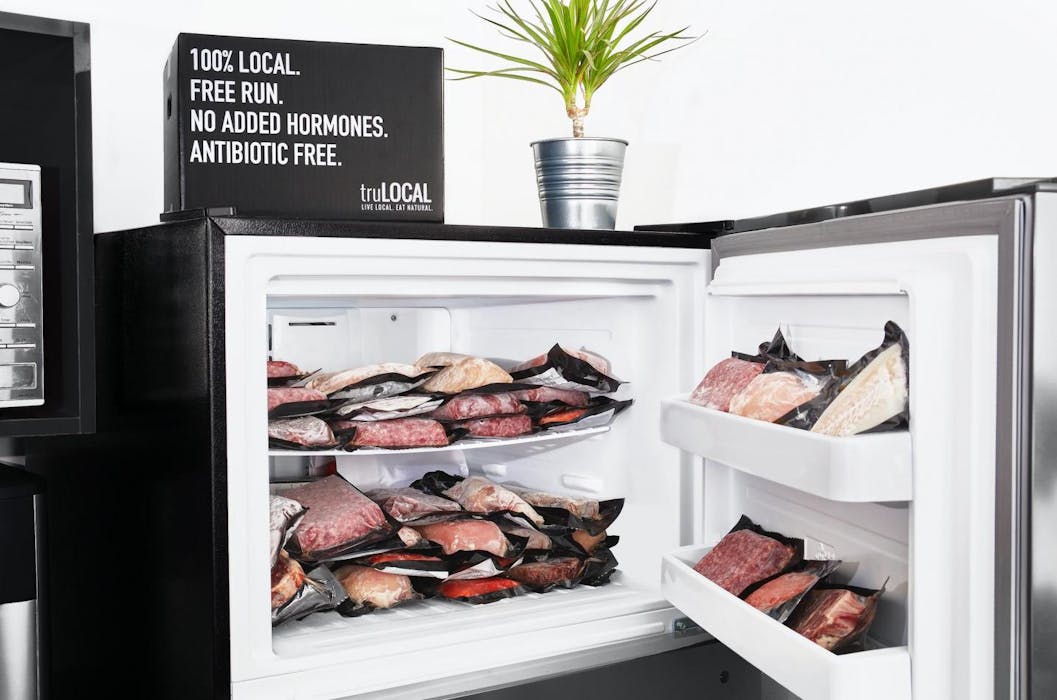 Back
Back
6 Tips for Transitioning to a Keto Diet
So you’ve heard about this keto diet and want to give it a go, but are having a little trouble getting started? Here are so simple tips to consider that will make eating keto a whole lot easier and help get you set up for success.

So you’ve heard about this keto diet and want to give it a go, but are having a little trouble getting started? Here are so simple tips to consider that will make eating keto a whole lot easier and help get you set up for success.
Use Hearty Carbohydrate Alternatives
One of the most common questions people ask when they consider going keto is; How will I stay full? When you are accustomed to eating to dense starchy carbohydrates like granola bars, potatoes and pasta, it’s can be a bit of a mystery how some chicken, broccoli and butter will actually keep you full. However, when it comes to the keto diet it is important to remember that vegetable are an important source of carbohydrate and fibre that remain in your diet, so using them to your advantage can help fill you up. Although leafy green pack a real nutritional bunch, high-fibre vegetable such as zucchini, Brussels sprouts, cabbage and cauliflower can provide a hearty and dense texture to meals and replace items like rice, pasta or potatoes in recipes.
Opt for Fattier Cuts of Meat
One important thing to understand when you are on a keto diet is that fatty cuts of meat are your friend. No longer do you need to limit yourself to chicken breasts and lean ground-beef, but rather rich cuts of meat such as skin-on chicken, pork shoulder and beef brisket can help you to create well-balanced meals. Just because the goal is to increase fat in your diet doesn’t mean you need to add avocado to every meal of the day, fatty cuts of meat can do this for you. Richer cuts of meat not only contain additional sources of fat, but they contain higher amounts of fat-soluble vitamins A, D, E and K2, as well as glycine (from skin, bones, cartilage, etc) that we don’t get in isolated lean cuts of meat. truLOCAL products such as skin-on chicken thighs, chicken wings, pork shoulder or lamb shank are great additions to a healthy keto diet.
Learn to Satisfy Your Sweet Tooth
When you are eating keto essentially all forms of sugar are off limits so learning to satisfy your sweet tooth can be hard, especially at the start. Fortunately, there are some simple and natural ways that you can satisfy your cravings without diving head first into a pint of ice cream. Stevia is a great all natural sweetener that you can added to your morning coffee, while alcohol based sweeteners such as erythritol or xylitol can be added to sweet treats or keto baked goods. Whole foods such as shredded coconut can provide a little sweetness as well as some healthy fats, and a small amount of berries used time to time can be helpful as well. Additionally, natural flavours such as cinnamon and vanilla extract can help to provide a little natural sweetness and keep cravings at bay. However, one thing that can not be stressed enough is that is important to avoid all artificial sweeteners such as aspartame, diet foods or diet sodas.
Leave More Time Between your Meals
The average North-American diet consists of frequent eating and multiple snacks during the day, however when eating keto this is no longer the case. As your body learns to utilize fat for energy, instead of glucose or carbohydrates, your body becomes more efficient at using fat for fuel which helps to balance your blood sugar, keep cravings at bay and keep you fuller and more energized for longer periods of time. So, instead of snacking every 2-3 hours you can limit yourself to three simple meals per day with 5 or more hours in between meals. As you progress through your keto journey, utilizing tools like intermitting fasting can become increasingly beneficial to your personal goals.
Use Real Cooking Fats
Although the goal is to increase fat in our diets while eating keto, it is important to understand that not all sources of fat are created equal. When it comes to cooking oils, it is important to focus on whole food based fats such as ghee, butter, coconut oil, avocado oil, olive oil, and animal fats, while avoiding all sources of vegetable oils. Vegetable based oils such as canola oil, corn oil or soybean oil are not ideal sources of cooking fat since they are unsaturated, and therefore less stable for cooking with at high heat, and are high in omega-6 fatty acids which can be inflammatory when consumed in excess. Rather, whole food based fats such as ghee, coconut oil or animal fats are saturated and are therefore ideal sources of cooking fat, and rich in fat-soluble nutrients. So, next time you fry up some delicious Ontario bacon from truLOCAL, save the excess fat, allow it to cool and use it to fry up your Brussel sprouts and broccoli at your next meal.
Learn to Eat Out Wisely
Although it might seem completely impossible, dinning out while eating keto can be done. In order to ensure that you maintain your keto diet while eating in a restaurant, a little preparation goes a long way. If you are able to look up the restaurant menu before hand it will be easier for you to make an informed decision when you arrive and not feel stressed about what you are going to eat when you get to the restaurant. Look for whole food based options with lots of veggies, some protein and healthy fats, and don’t be afraid to ask for for alterations or substitutions. In this day and age, restaurants are becoming more and more accommodating to consumer requests, so there is no need to be shy about asking to customize your order. Requesting a side of butter, olive oil or avocado are simple changes that most restaurants can easily make for you. Remember, you are paying for your meal, so as long as you ask nicely, you should get it the keto way you want it.
Posted on
September 14th, 2018







